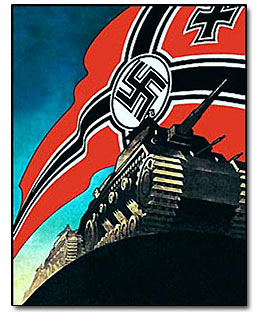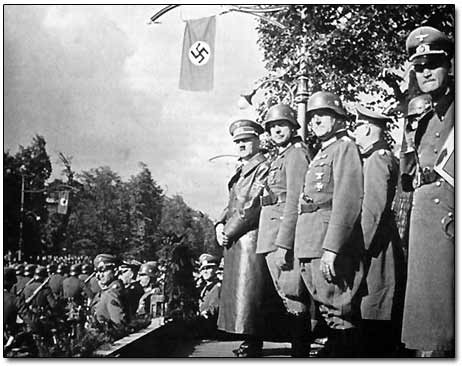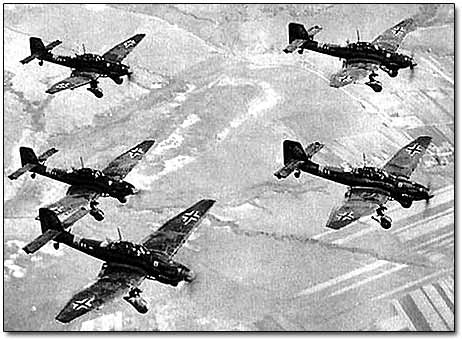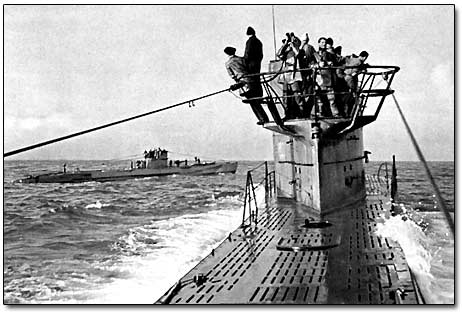World War II - Eastern Front, page 1
Brief Chronology and Historical Facts: Beginning of WW2 in Europe

The first contingent of 1,250,000 German troops invaded Poland on September 1, 1939. It was not until April 9, 1940 that German Army made any moves to break the stalemate of the so called "Phony War" - a period of war when no major offensives took place.
By using Blitzkrieg tactics ("lightning war"), Hitler's army defeated Allied troops and occupied most of Western Europe including France, Denmark, Norway, Holland, Belgium and Luxembourg by June 22, 1940. Britain, protected only by its island status, remained uninvaded by German forces.
September 1940 saw not only the beginning of the Blitz on Britain and the Italian invasion of Greece and Egypt but saw Japan striking into French Indochina and signing a ten-year pact with Germany and Italy.
The Axis Powers, as they became known, joined the three most territorially aggressive nations in the world in an alliance that spanned the globe.
German Military Parade of Troops Before Adolf Hitler in Warsaw, 05.10.1939

British bombing of German cities, industrial areas and the Baltic ports also began in September 1940. Initially the raids were in retaliation for attacks on British cities. In that year alone, both Royal Air Force (RAF) and German Luftwaffe lost over 2,500 airplanes combined during the war in the air.
German JU-87 Stuka Assault Plane Formation

The war at sea was mainly the Battle for the Atlantic. At the start of the war the German Navy had 28 submarines, or U-boats, and even this small number was successful in attacking Allied convoys with large numbers of ships, both military and merchant. The success of the U-boat in being able to attack ships virtually undetected encouraged Hitler to built more.
German U-Boats in the Atlantic

The amount of convoys crossing the Atlantic increased as the Lend-Lease Act of March 1941 allowed the US to be the main source of imported raw materials, food and military equipment needed by Britain. As the war progressed, the development of sonar, radar, radio intercepts, and air cover gradually enabled the Allies to have some success in the sea war. Some 87 U-boats were destroyed by Royal Navy in 1942.

The US had shown no inclination to engage in military action and with Japan, a Nazi ally, holding territory on the USSR's eastern border, Hitler felt confident that he could take the Soviet Union.
Hitler's plans for a "thousand-year Reich" were dependent upon the wealth and resources that the Soviet Union could supply.
Stalin believed that sooner or later Nazi ambitions would demand an attack on the USSR. The annexation of Poland through Nazi-Soviet non aggression pact (signed in August 1939), the Winter War with Finland (1939 - 1940), and the unresistant occupation of the Baltic States - Lithuania, Latvia, and Estonia - in June 1940, were all part of a plan to provide Russia with a buffer against German attack.